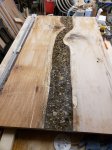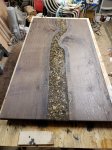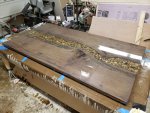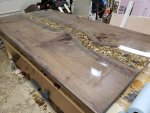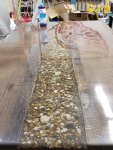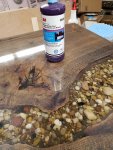This kitchen project is going well, but it is taking longer than I thought it would. It's starting to drag me down a bit. I should have been finished with the island top today. It's coming out very nice, but I'm very fussy. It is giving me a heck of a time with air bubbles in the finish layer of epoxy. I have decided that I'm going to let it cure for a day or so and sand out the two areas that I'm unhappy with. I had to order another gallon of epoxy so I can do a third coat.
I hope it works, but I have devised a solution to the air bubble issue. It's going to add a few days to the project, but I want it done right! By the time I'm finished with this top, I'm going to have probably about a hundred hours into it. But it is going to be spectacular.

